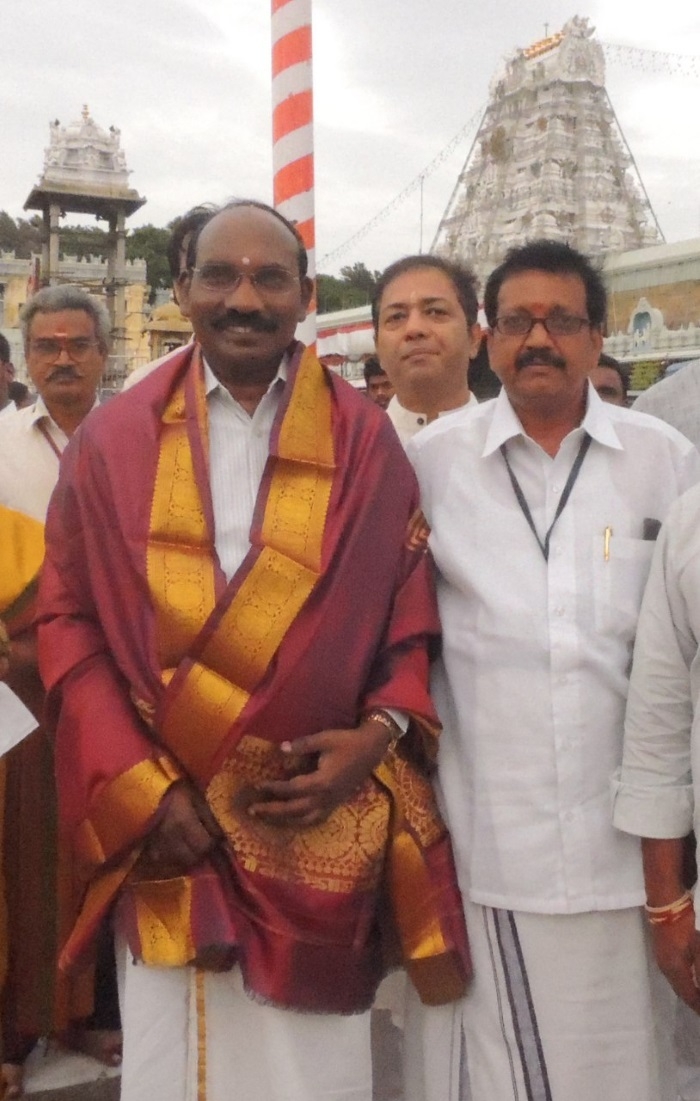Connecting Science with spirituality; Ahead of #Chandrayaan2, ISRO chairman visits Tirupati Temple
Total Views |
Tirumala, Jul. 13: Space dream of India will achieve the next destination with the launch of Chandrayaan 2. Just 2 days away, the launch of Chandrayaan will write a new chapter of success in an Indian space mission.

Seeking the blessing of God before any program is a tradition of Indians. Linking strongly with this tradition, Indian Space Research Organisation (ISRO) traditions, ISRO chairman Kailasavadivoo Sivan, on Saturday visited Andhra Pradesh's Tirumala Tirupati Temple ahead of Monday's Chandrayaan 2 launch.
On this visit, K Sivan said, “On Monday, early morning at 2:51 AM, we are going to have the most important and prestigious mission - Chandrayaan 2. The vehicle used for this mission is GSLV MK III. After the successful launch, it will take two months to go and land on the moon's south pole”.
Speaking about the significance of Chandrayaan 2, Sivan said that the mission aims at discovering new lunar science and hopes demonstration of new technological developments in 'soft landing'.
he added, "Preparations have been going on without any hitch. We hope the launch happens on Monday at 2:51 AM, as planned. This mission demonstrates the new technological development happening in a soft landing. We will also get a lot of new lunar science which makes it a very prestigious mission for India."
Chairman of ISRO seeking divine blessings usually from Lord Venkateswara is a well-established tradition. As per reports, last Sunday, Sivan also visited the Krishna Mutt in Udupi, Karnataka seeking blessings for the success of the mission.
In comparison, the US has spent $25 billion ($100 billion in current prices) in 15 Apollo missions to put a 'man on the moon'. Chandrayaan 2 aims at further probing into the moon's origins and testing the possibility of water presence on the south pole on Moon. Chandrayaan 2 will take off on July 15 and is expected to make a soft landing on the lunar South Pole - between two craters — Manzinus C and Simpelius N — at a latitude of about 70 ° south, on September 6.
As the South pole is the chosen site of study, Chandrayaan 2 aims at studying the craters which are cold traps, containing a fossilized record of the early Solar System.